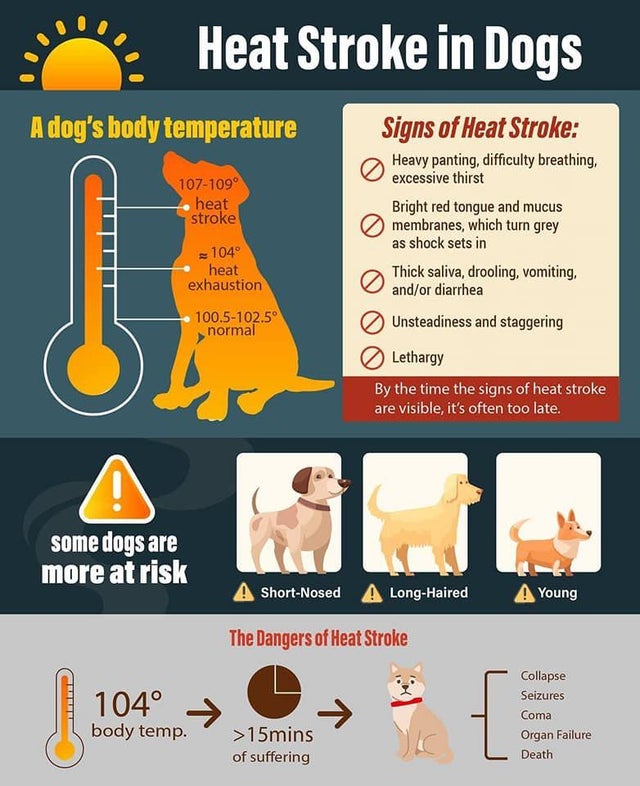There are several times of the year when humans are no longer a dogs best friend, and each season or event brings with it its own dangers. Preparing well can allow you to enjoy the event and keep your dog safe and content.
Summer is finally here and this “fun in the sun” season also happens to bring with it some hazards – especially for our pets. To make sure your pet’s summer season is as fun and safe as possible, Gwinnett Humane Society would like to share these important Summer Pet Safety Tips:
Never leave your pet in a car! Parking in the shade and leaving the windows open is not an option. Even if you are just running a quick errand, in a hot car your pet’s temperature can rise rapidly and they can overheat in a very short period of time. It only takes minutes to reach dangerous levels leading to heatstroke and even death.
Always make sure your pet has cool, clean water available. This is one of the easiest ways to avoid heat injuries in the summer months. Dogs, and even cats, drink more on hot days, and water warms up quickly, so make sure to change your pet’s water often.
Food and drinks you serve your family and friends may be poisonous to your pets. Backyard BBQs and pool parties are what we all look forward to during the summer, but keep an eye on what your pet is eating when you get the party started. Dogs and cats can experience severe digestive ailments when a change of diet takes place. The following products are extremely poisonous to pets: raisins, grapes, onions, chocolate and products with the sweetener, xylitol.

Do not force your dog into the water if he/she is frightened. Some dogs do not like to swim. If your dog likes to swim, do not leave him/her unattended. Bathe your dog afterwards to remove all sand, mud, and chlorine. Also, be sure all pool chemicals are stored safely out of reach.
Do not allow your dog to hang out of the window of a moving car. Objects such as rocks or tree limbs could seriously injure your pet, or he/she might fall or jump out.
Do not allow your animals to ride in the back of a pick-up truck. They could be thrown out, or they may jump out.
Take your pets inside if there is the possibility of a thunderstorm. Loud thunder may frighten them, or lightening could strike them.

If your pet likes to relax in the shade of a yard or deck, watch out for yellow jackets, bees, toads, and snakes. Bite or sting symptoms are usually swelling of the face or affected areas. Once stung or bitten, the pet’s skin may start to look wrinkly or bumpy. This is a first indicator and, if not treated by a veterinarian, could result in death due to toxins taking over and shutting down the animal’s body or causing air way swelling and suffocation.
Your pet CAN get sunburn. This is more likely in white dogs, hairless dogs, and dogs with light colored fur, such as Pit Bulls and Dalmatians. If you have a pet that meets this criteria, it is recommended that you apply sunscreen to your pet before it is allowed to be outside for an extended period of time.
Keep your dog’s paws cool at all times. Limit the time you let your dog roam in the backyard and outdoors, especially on hot asphalt. Since the ground heats up quickly during the summertime, your dog’s body heat can rapidly rise, and sensitive paw pads can get burned.
Original content can be found at animalleague.org
So, why are dogs afraid of fireworks, and what can we do to help them? Fortunately, there are plenty of simple strategies for dog owners. From distraction to anti-anxiety vests and more, we’ve rounded up all the tips you need to help your pet feel better when the noises start.
1. Stay indoors or get away from it all
Experts emphasize the importance of keeping your dog indoors on fireworks-heavy days. This helps reduce their exposure to the sounds, plus prevent their running away. Turning on a radio or television helps provide white noise and distraction.
Also, consider leaving town for a quieter spot if you can. Camping, perhaps? If you’re not able to get away, and you live in an area with lots of fireworks activity, try a pet sitter who doesn’t live as close to all that noise. A loving, local sitter or doggy day care provider can also help if your pup is going to be alone over the holiday.
2. Talk to your vet about possible medications
Talk to your veterinarian about medication if you know your pet is upset by the holiday festivities. There are a variety of options that could help treat your dog’s firework phobia.
3. Give your dog lots of snuggles
A common myth has it that if you pet your pup during an anxious episode, they’ll feel more afraid.
However, calmly soothing and reassuring your dog is fine as long as you avoid loud exclamations or frantic movements. So cuddle away!

4. Invest in a pressure wrap or vest
These snug-fitting vests apply sustained, comforting pressure to your dog’s torso.
Temple Grandin, professor of animal sciences, has researched this method and discusses it in her book Animals Make Us Human. Dr. Grandin advises putting on the wrap for 20-30 minutes, removing it for a similar period, and then reapplying it. A handful of companies offer them; we like both Anxiety Wrap and ThunderShirt.
5. Prevent escapes
More dogs go missing over the 4th of July than at any other time of year. The reason? They get spooked. This can happen when you least expect it! To help:
- Make sure your dog has identification. Even indoor pets can panic and use drastic measures to escape when frightened. Microchipping your dog is a good protective step.
- Don’t leave your dog unattended at home. If you’re headed out to enjoy the holiday without them, find a sitter. Rover has short-term sitters for just such situations.
For more great tips—and a video—on securing your home and yard, check out this handy post. It also details just what to do if your dog does get out.

Original content can be found on rover.com
There are plenty of events all year round that we can bring our dogs too. From July 4th parades and fireworks to street fairs, farmer’s markets, and art and music festivals, there is a plethora of activities for the whole family to attend. For pet owners, that can include bringing their dog along. While these events can be a great way to spend time with your pet, there are some issues to keep in mind to make sure your dog has a good time and a safe experience.
Here are some tips on how you can make sure you enjoy these outdoor community events while keeping your pet happy and healthy.
Heat
High temperatures affect all dogs, and certain breeds are particularly susceptible to heat exhaustion. Before bringing your dog to an event when the weather is hot, make sure you take into consideration the ability to keep them cool and comfortable. This means making sure ahead of time that you’ll have access to shade and water. If the event is in an urban location on hot pavement, you’ll have to provide protection for your dog’s paws or be able to avoid it. Consider the time of day the event is taking place. If it’s an all-day event, go early in the morning before the heat sets in or after dusk when it’s cooling off. If the event is in the hot afternoon sun, it may be best to leave your dog home.
The Elements
In addition to the heat, dog owners need to take into consideration other weather conditions, such as thunderstorms, wind, and rain. If your dog gets anxiety from the sound of thunder, you’ll need to be able to get them to a comfortable location should a storm occur. Summer storms can be unpredictable and an isolated thunderstorm can pop up out of nowhere, so it’s important to be able to seek shelter immediately. If you do get caught out in the elements, it’s important to have supplies to clean mud off and dry your dog.

Food
Ah, the smell of onion rings and fried dough! These tasty human treats are delicious to us and although tasty to dogs as well, are very bad for them. Summer is the season of food trucks and fair food. Dog owners need to be very prepared to make sure their pet does not eat any of this human food while out at crowded events. You will either need to train your dog to understand a command such as “leave it” or have them on leash to prevent them from eating anything they shouldn’t. A short leash or one that has a second handle for a short lead is best.
Many strangers in the crowd will think it’s okay to give your dog a little treat, so a short leash will help by keeping your dog closer to you, as well as providing you the opportunity to have a quicker response. If your dog has any food sensitivities that you are already aware of, it’s a good idea to be extra cautious when around that food. Also take extra care around chocolate, onions, alcohol, and coffee. These foods are very toxic to dogs.

Crowds
Before bringing your dog to a crowded event, it’s important to make sure they have socialization skills and be aware of the level of those skills. Is your dog socialized with both people and other dogs? Is your dog leash-aggressive? If you are unable to prevent your dog from pulling you on-leash to chase after another dog, then it may not be time yet to take them to crowded events.
Often in crowds, you will have people pet your dog before asking or overzealous children that are very excitable with your dog. You should have a plan in place for getting between your dog and these people if necessary. Do not use a retractable lead. As mentioned with the food issue, a short leash is the best option. Another consideration before taking your dog into a crowded event is their size. Small dogs run the risk of getting trampled in a crowd, and large dogs take up a lot of space, making it difficult to get around. You will need to be aware of just how crowded an event will be.
Original content can be found on redstonevet.com
